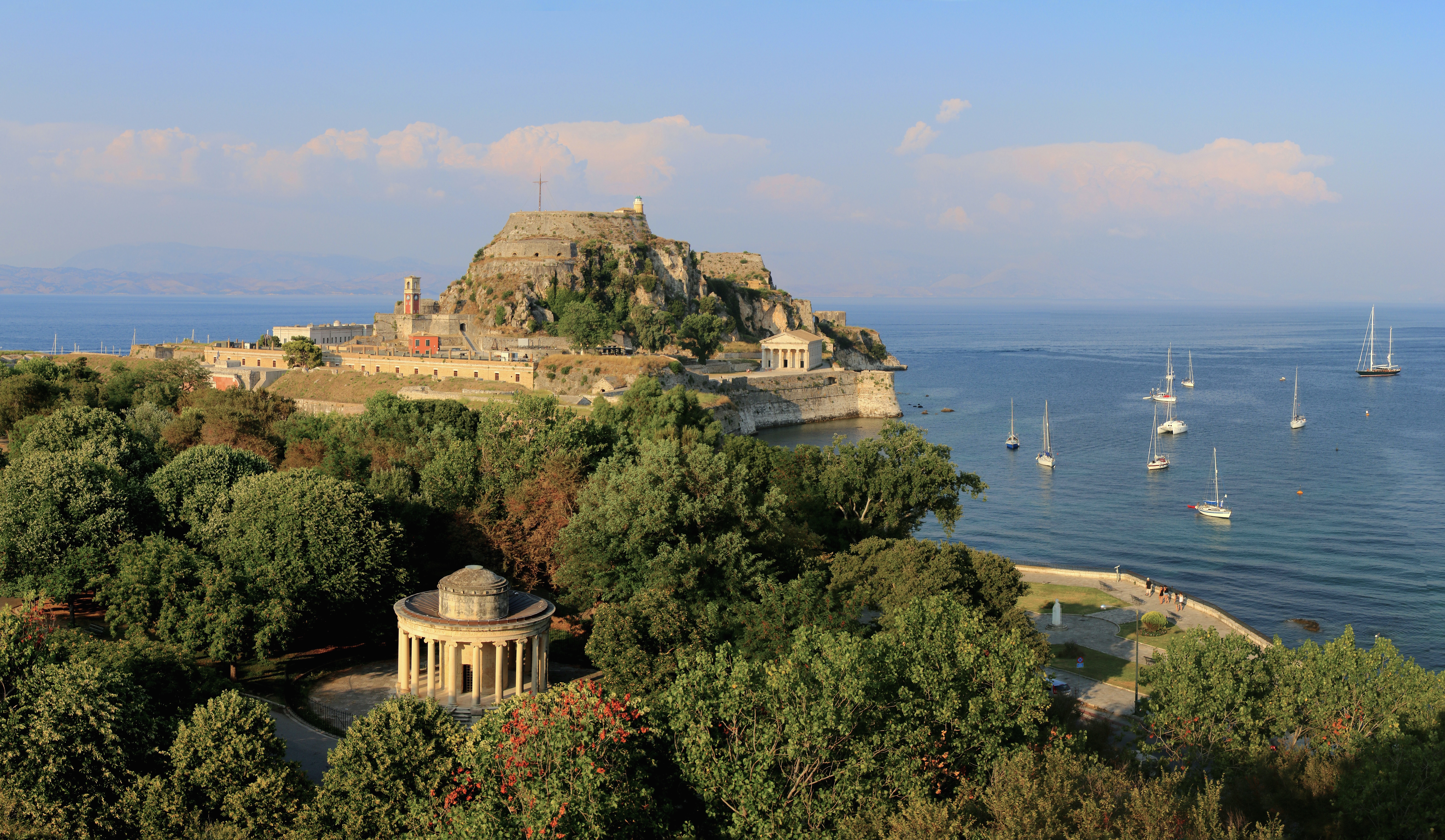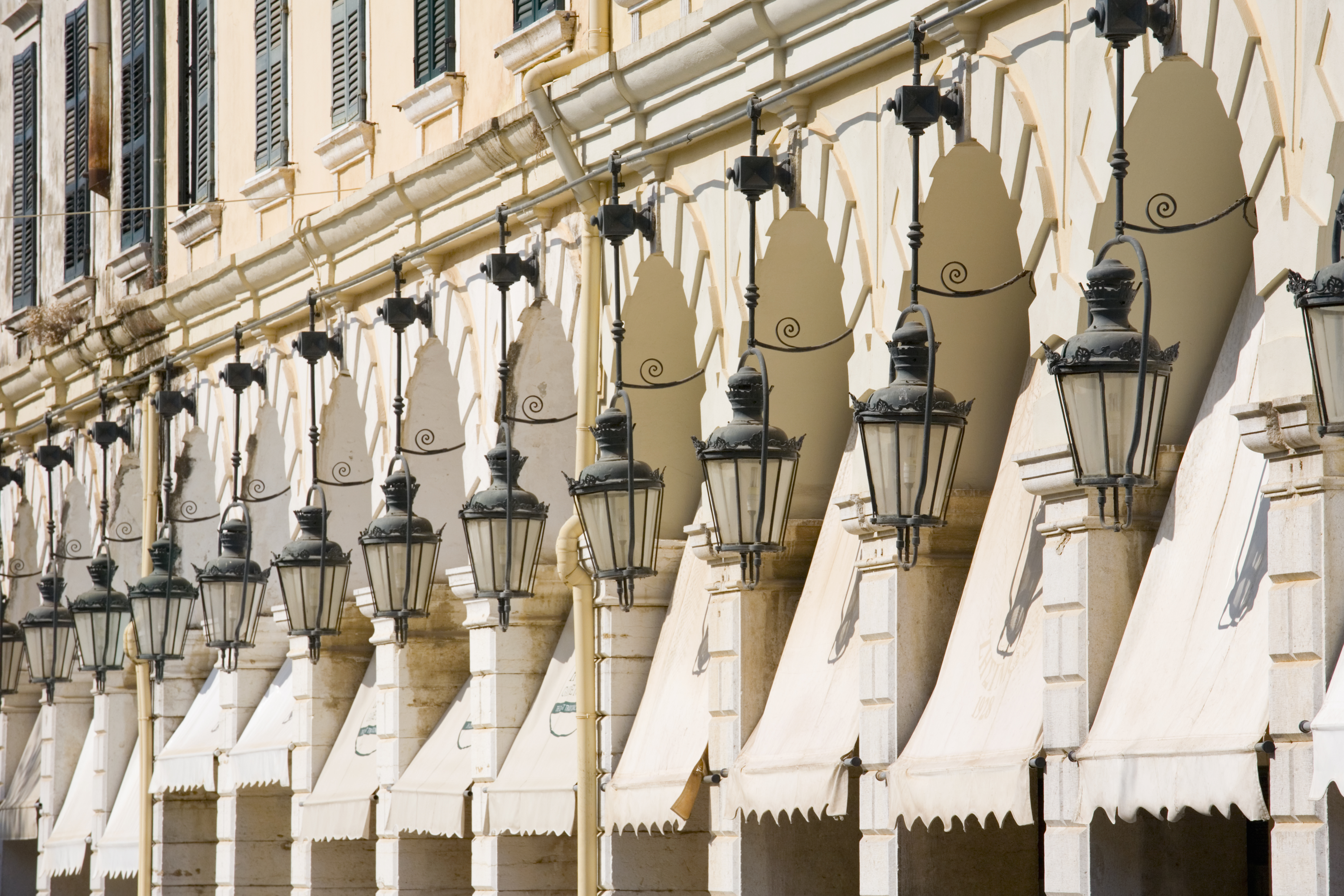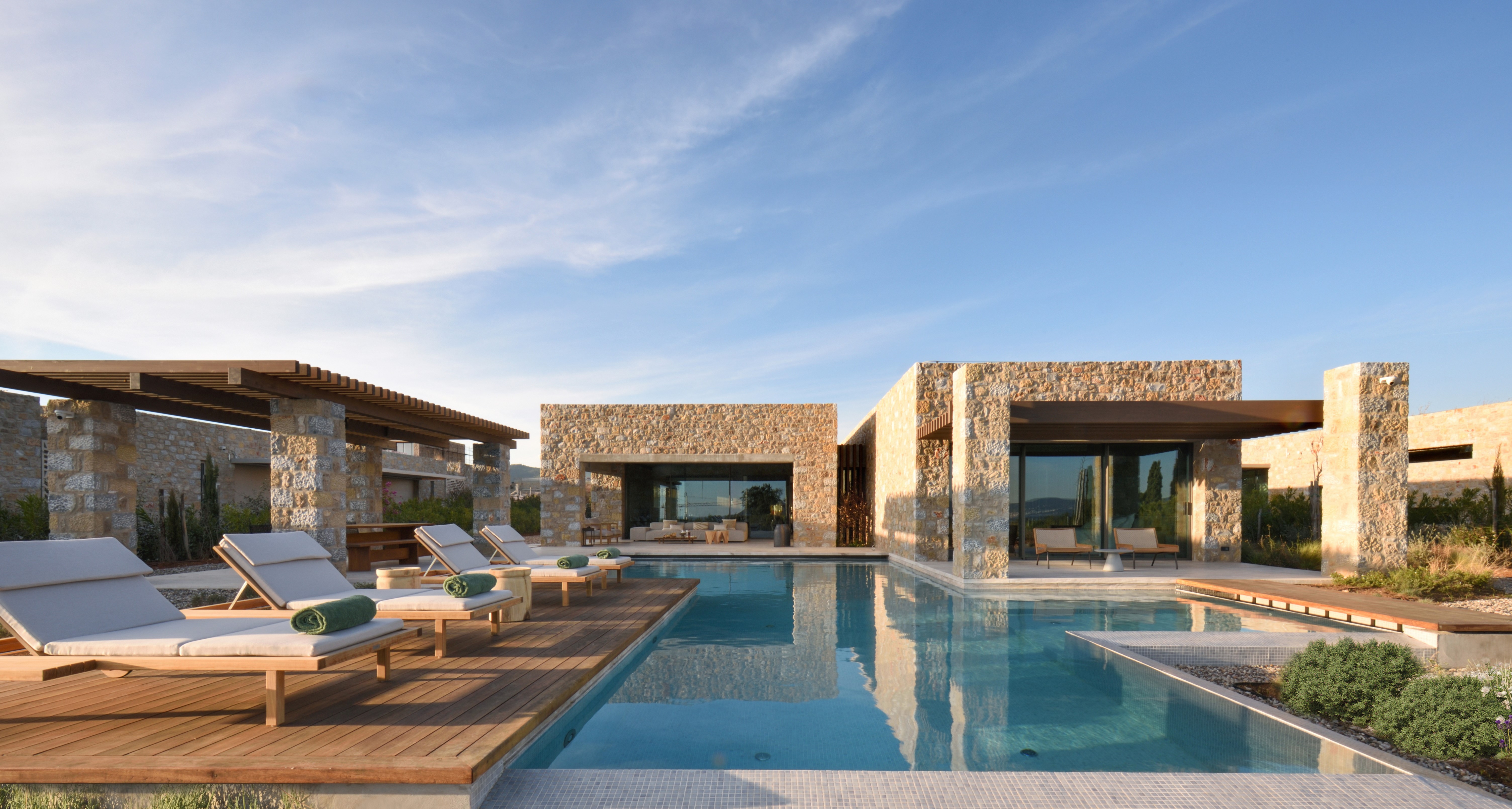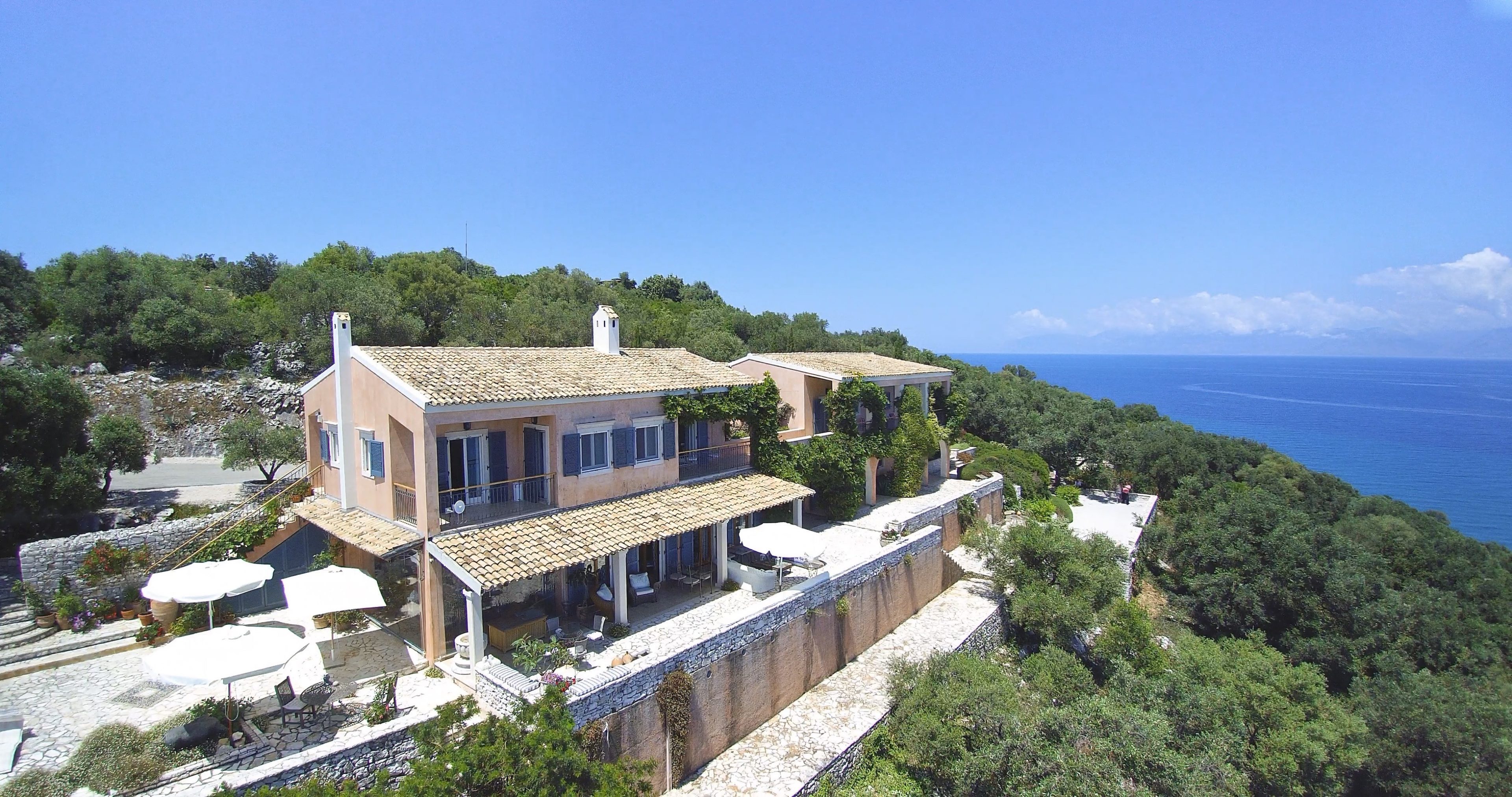Where Venice once ruled: The roving Venetians left handsome imprints across the Greek world, from its religion to its rambling villas
Matthew Dennison explores the lingering traces of Venice's vanished empire — and the best places to buy where it once stood.

From the Ionian Sea past the furthest reaches of the Mediterranean to the Istrian peninsula, from the Albanian coast to the shores of modern Montenegro, from Crete to Cephalonia stretched the empire of the Venetian Republic in its heyday more than 500 years ago.

The Old Town of Corfu was added to the UNESCO World Heritage List in 2007.
For centuries, Venetian galleys plied the eastern Mediterranean and the Black Sea. Trade demanded ports of call and free movement across seaways: colonisation followed Venice’s merchants. In her wake, she exported concrete evidence of her overlordship: the lion of St Mark carved boldly into granite walls of far-flung fortifications; on island hillsides rambling villas, like the homes of minor gentry in the Veneto, part-hidden by slopes of vines and olives; and in a sheltered bay of Messenia, close to the fashionable resort of Costa Navarino, the Roman Catholic Church of the Transfiguration of the Saviour, transformed by Venetian conquerors late in the 17th century from a terracotta roofed mosque. On the island of Crete, Gothic painting, Venetian style, changed religious imagery once influenced by Constantinople, and, in the 16th and 17th centuries, patterns of Venetian lace were reworked in boldly coloured embroidery on the flowing linen-cotton skirts of Cretan countrywomen. Across the Greek world, medieval and early-modern Venice — rich, resourceful and ruthless — left handsome imprints. Many remain visible today.
Where to buy in Costa Navarino

Occupying an enviable position on the Navarino Dunes with views over the Ionian Sea, these four-to-six-bedroom villas in the resort’s Olive Grove neighbourhood offer access to 5* facilities, including golf, a spa, restaurants and bars.
For sale from €5.1 million (about £4.4m) with Costa Navarino Residences.
Cartoonist and architectural historian Osbert Lancaster was attached to the British Embassy in Athens at the end of the Second World War. In its aftermath he visited the Ionian island of Corfu. Corfu was a Venetian possession for 400 years, until the Venetian Republic’s collapse at the end of the 18th century. For Lancaster, the island betrayed ‘a Western European inoculation’, lingering traces of Venetian culture. He glimpsed it in the islanders’ traditional dress, particularly that worn by Corfiot women, ‘a costume of exceptional charm and richness, of which the Italian origin is not in doubt, for its most distinguishing feature, a wheel-shaped turban of coloured ribbons braided in with the hair, has been exactly set down by Titian in his portrait of a Venetian courtesan’. He also saw it in domestic buildings in Corfu Town and the unpretentious estates of the island’s nobility, although his verdict on their charm was at odds with that of 17th-century Italian traveller Pietro della Valle, who dismissed the island’s architecture as resembling huts more than houses.
British holiday-makers associate Corfu with the legendary homeland of the Phaeacians, where a travel-weary Odysseus was discovered by the teenage princess Nausicaa, or with the adventures of the Durrells, fleeing the clouded skies and grey outlook of 1930s Bournemouth, but for Venetians half a millennium ago, locked into deadly conflict with the Ottoman Empire, Corfu was an essential bulwark against its eastern foe.
Where to buy in Porta, Corfu

Five-bedroom, five-bathroom Plumbago House benefits from views across the Ionian Sea and the Albanian mountains beyond. Landscaped grounds, dotted with olive trees and scented lavender, an infinity pool and a free-standing outdoor bath complement this Elysian Mediterranean home.
For sale for €1.95 million (about £1.67m), with Knight Frank (020–7861 5034).
Venetian aims were defensive and their appetite for the improvement of either Corfu or its people was evidently limited — the Corfiot historian Mario Pieri remembered of his childhood in the 1780s that there were ‘no public schools, no library, no printing press, and no regular bookseller’: the only literature to be bought consisted of a grammar and a Latin dictionary, displayed in a chemist’s window. Today, Corfu’s surviving painted and stuccoed Venetian-era country villas feature Italianate arcaded loggias and simple façades decorated with pilasters, but in Corfu Town it is Venetian fortresses that capture the imagination. Begun in the 1570s to designs by the architect Vitelli, the New Fortress dominates the skyline, an austere and bulky structure in the town’s north-west corner. By contrast, in Kremasti Square, a late-17th-century well decorated with carved stone panels offers a gentler reminder of Venetian occupation.
On the Aegean island of Crete — as the kingdom of ‘Candia’ a Venetian possession for more than 400 years, beginning in the early 13th century — reminders of Venice also remain widespread, including in the tall town houses of ports and urban centres and in the fortified port of Candia itself, modern-day Heraklion, which French silk merchant Jacques Le Saige, visiting in 1518, described with patriotic loyalty as so lovely from afar that his fellow travellers concluded ‘it could be one of the beautiful and strong cities of France’. Pilgrims to the island noted the Italianate Franciscan and Dominican monasteries visible from the sea, but noted, too — according to Henry Castela, who visited early in the 17th century — that, despite these physical proofs of Venetian rule, Cretans were in most ways left to live ‘the “Greek” way’. This included their Orthodox religious practices, which, the previous century, had startled a German pilgrim, Georg von Gaming, with their sumptuousness. In other ways, the Republic’s influence was far reaching, shaping cultural, social and economic life, especially for the Veneto-Cretan aristocracy and the merchant families who copied them. Even a way of wearing skirts, gathered up to make the front part of the underskirt visible, was said to be borrowed from Venice, where costly and elaborate fabrics had long formed part of fashionable women’s dress. Today, few examples survive outside the museums of Athens.
Across Venetian Greece, the coexistence of native and Italian influences was typical. Greek language and customs continued to dominate rural life; more fashionable elites embraced Italian culture, as did wealthy citizens of the Ionian island of Zakynthos, a Venetian possession from 1487, who sent their sons to Venice to be educated.
Exquisite houses, the beauty of Nature, and how to get the most from your life, straight to your inbox.
Where to buy in Kassiopi, Corfu

A seven-bedroom, seven-bathroom villa with views across the azure waters of the Ionian Sea. A sea terrace, infinity pool and gardens scented with jasmine and wisteria complete this blissful retreat.
In the same way, Greek artists, including Doxaras Panagiotis, travelled to Italy to train, in Panagiotis’s case leaving Zakynthos and later settling in the Venetian Peloponnese. Other such artists transformed the visual arts in the Ionian islands from Byzantine to western European styles; Renaissance- and Baroque-influenced painting created by Panagiotis and his followers once decorated a number of Venetian-era churches.
It was on the Greek mainland that the Venetians embarked on their last imperial huzzah. The castle of Palamidi, on a hill north of Nafplio’s old town — a Greek seaport known to the Venetians as Napoli di Romania — is a fortress-like defensive structure overlooking a gulf of the Aegean off the east coast of the Peloponnese. On the instructions of the Venetian conqueror Morosini, who had won back the previously Venetian port from Ottoman rule in 1685 and would later serve as Doge of Venice, builders worked quickly. Modern tourist authorities claim the castle as a masterpiece of 18th-century Venetian architecture, but, as a 1708 drawing by Franciscan friar-cum-cartographer Francesco Maria Coronelli reveals, it is an almost medieval design, sprawling on its lofty sight, impressive and forbidding. Not so forbidding, however, that it served its purpose with distinction. In 1715, the fortress fell to Ottoman attack and, for the second time, Venice forfeited control of this isolated jewel, surrounded then (before modern land reclamation projects) by marshes and the sea. It was not a turnabout that troubled the Greeks. They had disliked Venetian rule.
Today, despite Palamidi’s physical bulk, few reminders of La Serenissima’s sway shape life in this outpost. Instead, as are buildings across the Greek world, it is a reminder of a vanished empire, the influence of which extended far from a watery lagoon in north-east Italy, souvenirs of Venice in distant territories, memories that linger.
This feature originally appeared in the June 25, 2025, issue of Country Life. Click here for more information on how to subscribe
